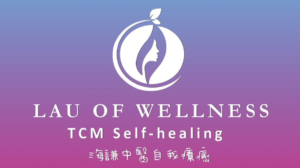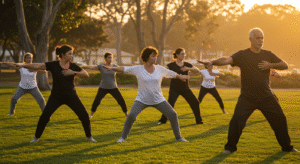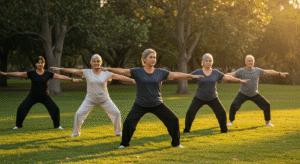Are you feeling stressed out and not sure where to turn? If so, you’re not alone. But don’t worry, because we’re here to help with “Meditation For Stress Relief For Beginners.”
In this guide, we’ll show you how meditation, a simple practice with big benefits, can help you feel calmer and more at ease.
Whether you’re just starting out or looking to learn more, join us on this journey to discover how meditation can bring peace to your mind and body.
Understanding Meditation: An Introduction for Beginners
Various spiritual systems can trace their origins to the ancient practice of meditation. However, you don’t need to be a monk or guru to benefit from meditation. In fact, anyone can practice meditation, regardless of their religious beliefs or background.
At its core, meditation is about training your mind to focus and become more aware of the present moment. It involves sitting quietly and paying attention to your thoughts, breath, or bodily sensations. The goal isn’t to empty your mind of thoughts completely but rather to observe them without judgment.
Through regular practice, meditation can help reduce stress levels, improve concentration, and enhance overall well-being. It can also have physical benefits such as lowering blood pressure and heart rate, as well as decreasing muscle tension.
The Benefits of Meditation for Stress Relief
There are numerous benefits to incorporating meditation into your daily routine, especially when it comes to managing stress.
Here are some key advantages:
Stress Response: When we experience stress, our bodies go into “fight or flight” mode, releasing hormones like adrenaline and cortisol. By practicing meditation regularly, you can help regulate these stress hormones and decrease the overall reactivity of your nervous system.
Physical Health: Chronic stress can hurt your physical health, leading to issues like high blood pressure, headaches, and digestive problems. Meditation has been shown to reduce these physical symptoms of stress and improve overall well-being.
Deep Breaths: Many meditation techniques involve focusing on the breath, which can help promote relaxation and calmness. By practicing breathing exercises during meditation, you can learn to take deeper breaths, which can help reduce feelings of anxiety and tension.
Mental Clarity: Meditation can help clear your mind of cluttered thoughts and improve your ability to focus. By taking time to sit quietly and observe your thoughts without judgment, you can develop a sense of mental clarity that can carry over into your daily life.
Emotional Regulation: Stress often leads to feelings of overwhelm and emotional reactivity. Through regular meditation practice, you can learn to regulate your emotions more effectively and respond to challenging situations with greater ease.
Improved Sleep: Stress can disrupt our sleep patterns, making it difficult to fall asleep or stay asleep throughout the night. However, meditation can help promote relaxation and improve the quality of your sleep. By incorporating a short meditation session before bed, you may find it easier to unwind and drift off into a restful slumber.
Getting Started with Meditation: Essential Tips for Beginners
Getting started with meditation could be intimidating if you’ve never done it before. But don’t worry – we’ve got you covered with some essential tips to help you ease into this practice and start reaping the benefits of stress relief.
Find a Quiet Space
Before beginning to meditate, find a place where you won’t be interrupted.
This could be a corner of your bedroom, a cozy spot in your living room, or even a park outdoors.
Set Aside Time
Make it a point to dedicate a specific time each day for your meditation practice.
Whether it’s first thing in the morning, during your lunch break, or before bed, consistency is key when it comes to making meditation a habit.
Focus on Your Posture
Keep your back straight and your shoulders relaxed while you sit comfortably.
The most comfortable position for you might be lying down, sitting cross-legged on the floor, or even in a chair with your feet flat on the ground.
Choose Your Meditation Technique
It is essential to discover a form of meditation that suits you, as there are several to choose from.
Mindfulness, loving-kindness, and guided visualization are a few of the more well-known methods.
Start with Breathing Exercises
A simple way to begin your meditation practice is by focusing on your breath.
Close your eyes and take slow, deep breaths, paying attention to the sensations as you inhale and exhale.
Be Patient with Yourself
Keep in mind that practicing meditation regularly takes time.
It’s normal to have wandering thoughts or distractions during your practice, so be patient with yourself and gently guide your focus back to your breath or chosen meditation technique.
Start Small
For those who are just starting out with meditation, it’s recommended to start with short sessions and build up to longer ones as you feel more at ease.
Even just five minutes of meditation can make a difference in how you feel.
Stay Consistent
For best results, aim to meditate daily for at least a few minutes.
If you want to get the stress-relieving effects of meditation, you need to be consistent.
Notice the Effects
Pay attention to how you feel before and after your meditation practice. Notice any changes in your stress levels, mood, or overall sense of well-being.
Over time, you may start to notice a greater sense of calm and relaxation in your daily life.
Seek Guidance
If you’re feeling unsure about how to start or maintain a meditation practice, consider seeking guidance from a meditation teacher or attending a class or workshop.
You can maintain your motivation and dedication to your practice with the help of others who can guide and encourage you.
Basic Meditation Techniques
- Meditation practiced with an attitude of nonjudgmental awareness is known as mindfulness. Simply sit quietly and observe your thoughts, sensations, and emotions as they arise. You can also focus on your breath or a specific object to anchor your attention.
- Meditation on loving-kindness entails directing feelings of compassion and kindness toward oneself and those around you. Start by directing loving-kindness towards yourself, then towards a loved one, a neutral person, and finally towards someone you may have difficulties with.
- Guided Visualization: In this technique, you can listen to a guided meditation recording that helps you visualize a peaceful scene or scenario. This can help relax your mind and body by positively engaging your imagination.
- Body Scan Meditation: This technique involves systematically focusing on different parts of your body, starting from your toes and working your way up to the top of your head. This can help you tune into physical sensations and release tension in your body.
- Mantra Meditation: Mantra meditation involves repeating a word, phrase, or sound (such as “om”) silently or out loud. This repetitive practice can help quiet the mind and bring a sense of calm and focus.
Discovering Your Ideal Method of Meditation through Experimentation
When it comes to meditation, there is no one-size-fits-all approach. Each person may resonate with different styles of meditation, so it’s important to explore various techniques to find what works best for you. Here are some tips on how to discover the right meditation style for your needs:
- Research Different Styles: Take the time to research various meditation styles, such as mindfulness, loving-kindness, guided visualization, body scan, mantra, and more. Read about each technique and consider trying them out to see which one resonates with you the most.
- Attend Classes or Workshops: Consider attending meditation classes or workshops that focus on different styles of meditation. This can allow you to learn from experienced teachers and practitioners, as well as try out different techniques in a guided setting.
- Experiment on Your Own: Set aside some time to experiment with different meditation styles on your own. You can try out different techniques for a few days or weeks to see how they affect your stress levels and overall well-being.
- Listen to Your Intuition: Pay attention to how you feel when practicing different meditation styles. Notice which techniques bring you a sense of calm, relaxation, and inner peace. Trust your intuition and continue exploring the styles that resonate with you the most.
Remember that finding the right meditation style is a personal journey, so be patient with yourself as you explore different techniques.
With time and practice, you’ll be able to find a meditation style that suits your needs and preferences.
Overcoming Common Challenges in Meditation for Stress Relief
While meditation can be a powerful tool for stress relief, it is not uncommon to encounter challenges along the way.
Here are some common obstacles that beginners may face when starting a meditation practice and tips on how to overcome them:
Restlessness or Racing Thoughts
It’s natural for your mind to wander during meditation, especially if you are feeling stressed or anxious. If you find yourself getting distracted by racing thoughts, try gently bringing your attention back to your breath or the present moment.
Remember that it’s okay to have a busy mind – the key is to acknowledge your thoughts without judgment and gently guide your focus back to your practice.
Impatience or Frustration
Some beginners may feel impatient or frustrated when they don’t see immediate results from their meditation practice.
Always keep in mind that practicing meditation regularly involves dedication and persistence.
Be kind to yourself and trust that with regular practice, you will start to experience the benefits of reduced stress and increased relaxation.
Physical Discomfort
Sitting still for an extended period can sometimes lead to physical discomfort, such as stiffness or tension in the body.
To address this, try experimenting with different meditation postures (such as sitting on a cushion or using a chair) or incorporating gentle movement into your practice, such as stretching or yoga.
Listen to your body’s cues and make adjustments as needed to ensure comfort during meditation.
Lack of Time
Finding time for meditation can be challenging, especially when you have a busy schedule.
However, it’s important to remember that even just a few minutes of meditation each day can make a difference in your stress levels.
Consider incorporating short meditation sessions into your daily routine, such as during your morning or evening routine, on your lunch break, or before bed.
Setting aside even just 5-10 minutes for meditation can help you reap the benefits of reduced stress and increased relaxation.
Consistency
Consistency and dedication are required to establish a regular meditation routine.
To overcome this challenge, try to establish a routine for your meditation practice by setting aside a specific time each day to meditate.
You can also create a dedicated space for meditation in your home where you feel calm and relaxed.
By making meditation a priority in your daily schedule, you can cultivate the habit of regular practice and experience the long-term benefits of stress relief.
Deepening Your Practice: Advanced Techniques for Stress Relief
Once you have established a regular meditation practice and are feeling comfortable with basic techniques, you may want to explore more advanced methods for stress relief.
Here are some advanced meditation techniques that can help deepen your practice and enhance your ability to manage stress:
Body Scan Meditation
Body scan meditation involves focusing on different parts of your body, one at a time, and bringing awareness to any sensations or tension present. This technique can help you release physical tension and promote relaxation throughout your entire body.
To practice body scan meditation, start by sitting or lying down in a comfortable position. Put your focus on your toes and close your eyes.
Slowly move up through each part of your body, from your feet to your head, noticing any sensations or tension along the way.
Take deep breaths and allow yourself to relax each part of your body as you scan through it.
Loving-Kindness Meditation
Loving-Kindness Meditation also known as Metta meditation, loving-kindness meditation involves cultivating feelings of love, compassion, and goodwill towards yourself and others. This practice can help reduce negative emotions and increase feelings of connection and empathy.
To practice loving-kindness meditation, start by sitting in a comfortable position and closing your eyes.
Begin by sending loving-kindness towards yourself by repeating phrases such as “May I be happy, may I be healthy, may I be safe, may I live with ease.“
Then, extend these wishes to loved ones, acquaintances, neutral individuals, and even difficult people in your life.
Allow yourself to cultivate feelings of love and compassion towards all beings.
Mindfulness Meditation
The practice of mindfulness meditation entails nonjudgmental, present-moment attentiveness. This practice can help you develop awareness of your thoughts, emotions, and sensations, and can help you manage stress more effectively.
To practice mindfulness meditation, simply sit quietly and focus on your breath or a specific object.
Notice any thoughts or distractions that arise without getting caught up in them. Just watch them with interest and then release them.
Bring your attention back to the present moment whenever you find yourself lost in thought.
By incorporating these advanced meditation techniques into your practice, you can deepen your ability to manage stress and cultivate a sense of calm and relaxation in your daily life.
Utilize Lau Of Natural Healing TCM Wellness Classes For Stress Relief
Utilize Lau Of Natural Healing TCM Wellness Classes For Stress Relief
In addition to incorporating meditation into your daily routine, you may also want to consider attending Lau Of Natural Healing TCM (Traditional Chinese Medicine) wellness classes for stress relief. These classes offer a holistic approach to managing stress and promoting overall well-being.
TCM wellness classes often include practices such as acupressure, herbal medicine, dietary therapy, and qigong exercises. These ancient techniques can help balance the body’s energy flow and promote relaxation, reducing stress levels in the process.
By participating in Lau Of Natural Healing TCM wellness classes, you can learn how to incorporate these traditional healing practices into your daily life and experience the benefits of holistic stress relief.
These classes provide a supportive environment where you can learn and practice these techniques under the guidance of experienced instructors.
Get in touch with Natural Healing TCM today to learn more about our stress relief classes and start your journey towards a calmer, more balanced life.
Remember, managing stress is essential for both physical health and mental well-being, so take the time to prioritize your self-care and invest in practices that promote relaxation and inner peace.
Final Thoughts
Meditation is a powerful tool for managing stress and promoting overall well-being, and it can be especially beneficial for beginners looking to reduce feelings of anxiety and overwhelm. By incorporating simple breathing techniques, mindfulness practices, and loving-kindness meditation into your daily routine, you can begin to cultivate a sense of inner peace and relaxation.
Regular practice is key when it comes to reaping the benefits of meditation for stress relief. Even if it’s only for a little while, make sure you give yourself time every day to meditate.
Over time, you may notice improvements in your ability to cope with stress, as well as greater mental clarity and emotional balance.
Additionally, consider exploring different types of meditation to find what works best for you. Whether it’s mindfulness meditation, loving-kindness meditation, or body scan meditation, there are numerous forms to choose from.
Experiment with different techniques to see which resonates most with you and helps you feel the most relaxed and at ease.
Remember that managing stress is a lifelong journey, and it’s important to be patient and compassionate with yourself as you navigate this process.
By incorporating meditation into your daily routine and seeking out additional resources like Lau Of Natural Healing TCM wellness classes, you can take steps towards creating a more peaceful and balanced life.
Prioritize your well-being and make self-care a priority by incorporating meditation for stress relief into your daily routine.
In the end, your body and mind will be grateful.
FAQs Related to Meditation For Stress Relief For Beginners
Meditation can help beginners manage stress by promoting relaxation, improving focus, and reducing the body’s stress response. By incorporating deep breathing techniques and mindfulness practices, individuals can cultivate a sense of calm and inner peace.
Beginners are encouraged to start with just a few minutes of meditation each day and gradually increase the duration as they become more comfortable with the practice. Consistency is key, so aim to incorporate meditation into your daily routine to reap the benefits of stress relief.
The best time to med itate for stress relief is ultimately whenever works best for you. Some people find it helpful to meditate in the morning to start their day with a sense of calm, while others prefer to meditate in the evening to unwind and relax before bed. Experiment with different times of day to see what works best for you.
Yes, meditation is effective in reducing chronic stress levels. By regularly practicing meditation, individuals can lower their blood pressure, heart rate, and overall stress levels, leading to improved mental and physical health.
There are many different types of meditation techniques, so beginners need to explore and find what works best for them. Some popular techniques for beginners include deep breathing exercises, mindfulness meditation, loving-kindness meditation, and body scan meditation. Experiment with different techniques to see which resonates most with you and helps you feel the most relaxed and at ease.


















2 thoughts on “Meditation For Stress Relief For Beginners – Complete Guide”
Hey! Would you mind if I share your blog with my twitter group? There’s a lot of folks that I think would really enjoy your content. Please let me know. Cheers
Hey zoritoler 🙂
thank for reaching me.
yes you can share for sure.